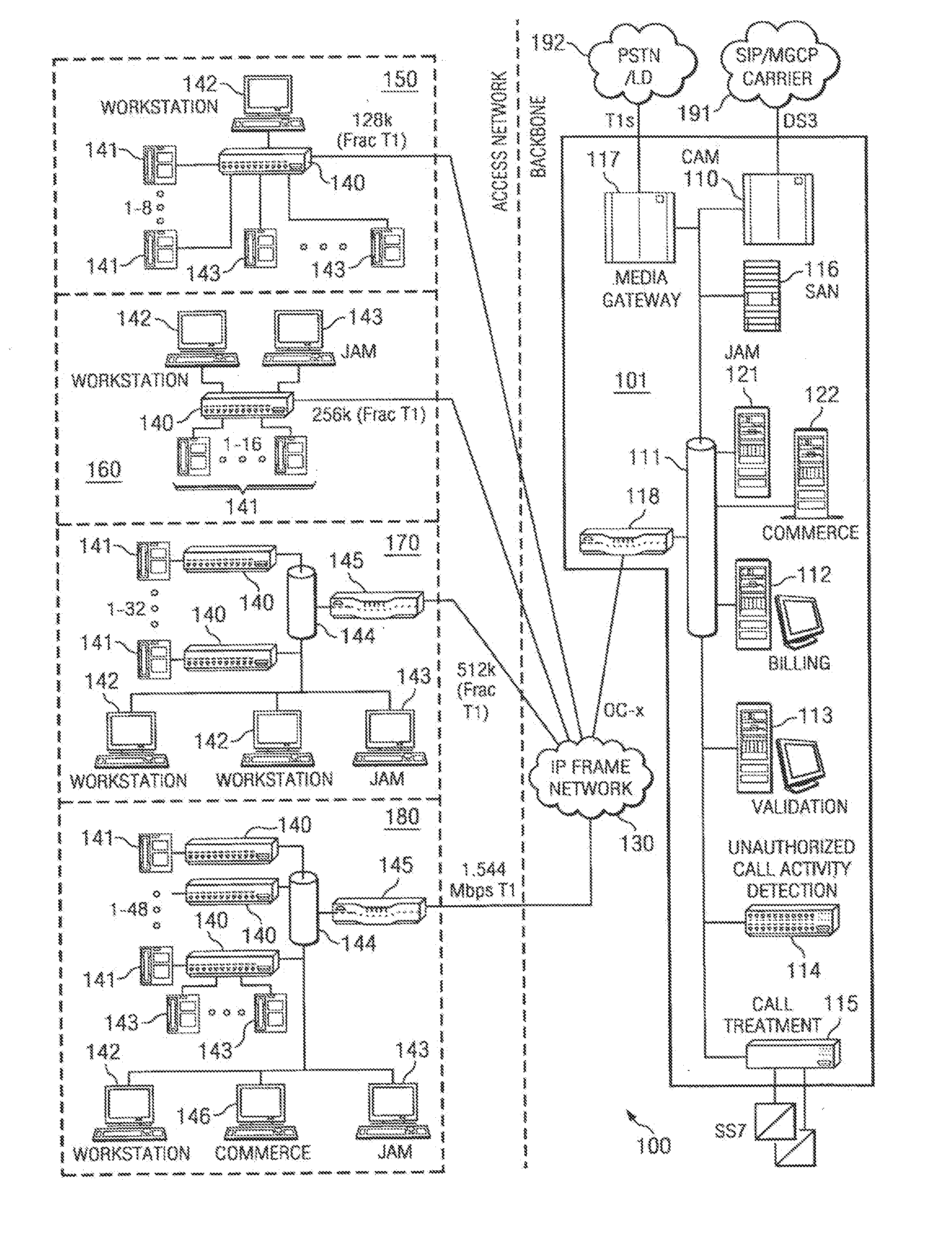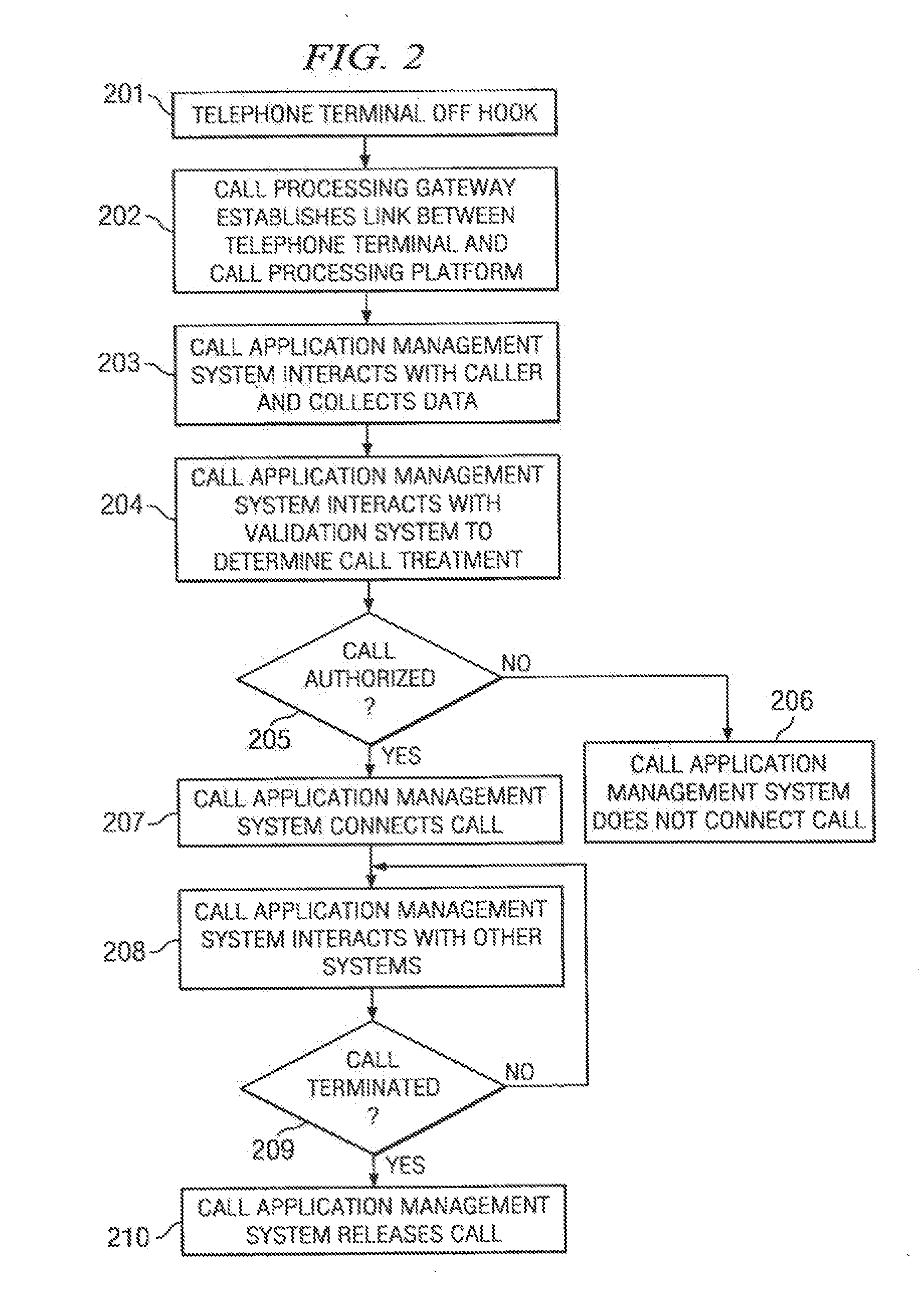Centralized call processing
a call processing and central processing technology, applied in the field can solve the problems of large number of call processing systems, equipment costs, and not new, and achieve the effects of facilitating low latency data communication, high capacity, and low connection cos
- Summary
- Abstract
- Description
- Claims
- Application Information
AI Technical Summary
Benefits of technology
Problems solved by technology
Method used
Image
Examples
Embodiment Construction
[0021]Directing attention to FIG. 1, an embodiment of a centralized or nodal call processing system according to the present invention is shown as call processing system 100. Call processing system 100 of the illustrated embodiment includes call processing platform 101 in communication with facilities 150-180 via network 130. It should be appreciated that, although only a single call processing platform is represented in FIG. 1, any number of call processing platforms, perhaps having varied configurations and / or disposed at different geographic locations, may be implemented with respect to a call processing system of the present invention. Likewise, the number and configurations of facilities for which calling services may be provided by a call processing system of the present invention is not limited to that shown in FIG. 1.
[0022]To better aid the reader in understanding the concepts of the present invention, call processing system 100 of FIG. 1 is described herein with reference t...
PUM
 Login to View More
Login to View More Abstract
Description
Claims
Application Information
 Login to View More
Login to View More - R&D
- Intellectual Property
- Life Sciences
- Materials
- Tech Scout
- Unparalleled Data Quality
- Higher Quality Content
- 60% Fewer Hallucinations
Browse by: Latest US Patents, China's latest patents, Technical Efficacy Thesaurus, Application Domain, Technology Topic, Popular Technical Reports.
© 2025 PatSnap. All rights reserved.Legal|Privacy policy|Modern Slavery Act Transparency Statement|Sitemap|About US| Contact US: help@patsnap.com



